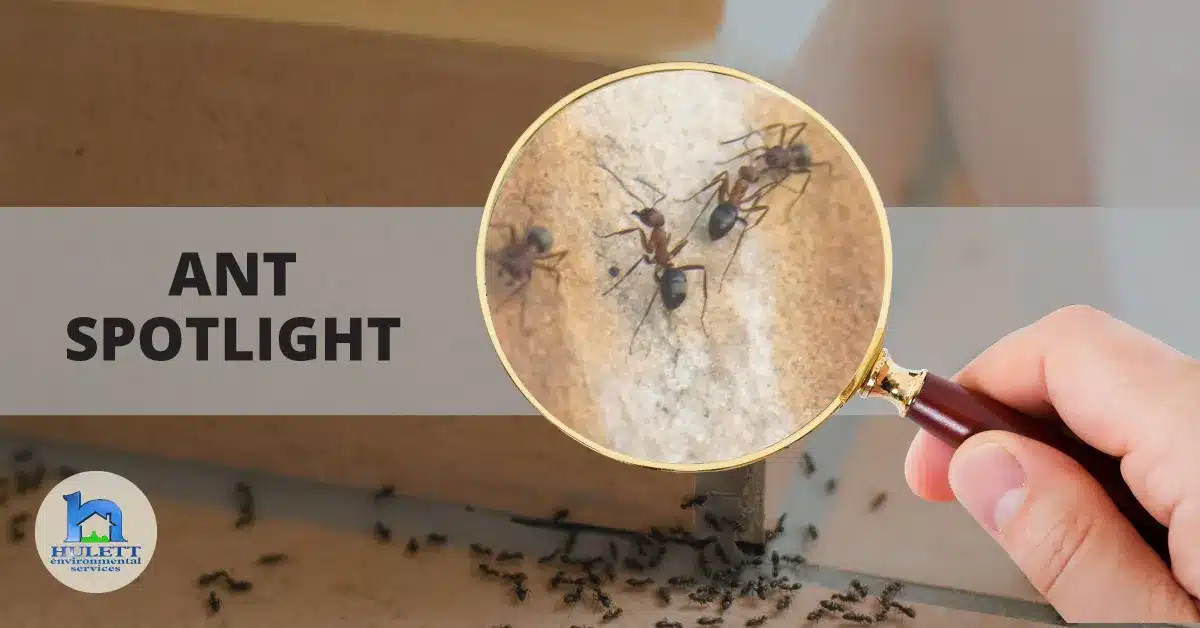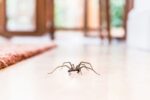
Ant Spotlight: Caribbean Crazy Ants
Originally thought to be Paratrechina pubens, an ant from the Lesser Antilles that were imported in shipping containers to South Florida’s shores in the 1950s, the large populations of crazy ants found in Florida in the 1990s were a slightly different species called Nylanderia fulva, the tawny crazy ant, whose point of origin is actually Brazil. Introduced to Colombia in the 30s and 40s as a biological control for leaf-cutting ants and poisonous snakes, according to a 2012 University of Florida IFAS article, tawny crazy ants are on the rise in “24 counties in Florida: Alachua, Brevard, Broward, Clay, Collier, DeSoto, Duval, Hardee, Hillsborough, Indian River, Lee, Manatee, Marion, Martin, Miami-Dade, Orange, Palm Beach, Pasco, Pinellas, Polk, Saint Johns, Saint Lucie, and Sarasota.” Small, reddish-brown ants get their names from their erratic actions Not a large ant, by any means, compared to the reigning invasive ant species in the Southeast, the formidable, South American fire ant, these small, 1/8-inch, hairy, reddish-brown ants with ridiculously long antennae and legs behave in some, well . . . crazy ways. Moving rapidly along dense foraging trails, Caribbean crazy ants seem to break into their own samba interpretations, dashing madly about in all directions when disturbed, possibly in pursuit of a dance partner. All kidding aside, like many invasive species, crazy ant populations contain multiple queens in order to accelerate population growth. Crazy ant populations number in the millions, with infestations described as ants, “blanketing yards and sidewalks.” Also, known to overcome small animals and livestock, crazy ants lodge in the nostrils of animals, asphyxiating newborn livestock. With one population of crazy ants in the millions, these colonies consist of a network of nests that make these ants impossible to control by homeowners with commercially available products. Adaptable and resistant to fire ants, crazy ants can cause a lot of damage Incredibly adaptable to areas with high moisture conditions, like South Florida, crazy ants can also survive in drier conditions, which is why their cousin, the Rasberry crazy ant has been spotted marauding around Texas, along with the longhorn crazy ant. In the Southeast, crazy ants are overtaking South American fire ants, causing a disruption in ecosystems. While the dreaded fire ant’s venom packs a powerful punch to humans and animals, this invasive species builds noticeable mounds in your backyard and only attack humans and pets, when provoked. Crazy ants might make you miss your aloof fire ant neighbors Interestingly, crazy ants, originating from the same area of the globe as fire ants, secrete venom that acts as an antidote to fire ant venom. This peculiar adaptation allows the smaller, crazy ants to triumph over larger, more venomous fire ants. Crazy ants, with an appetite for honeydew, produced by aphids and scale insects, move the aphids from infested plants to healthy plants, in order to enjoy the honeydew. This activity can decimate agricultural crops and eliminate insects that are attracted to crops, drastically reducing food sources for birds and other animal life that rely on insects as food sources. Crazy ants will feed on dead insects as well as rabbits, lizards and other small animals. Crazy ants invade your electric circuits Additionally, while fire ants generally keep to themselves in large, visible mounds in your backyard, crazy ants don’t mind invading your home, jamming your electronics and causing shortages in your electrical circuits. Not the only ants to be attracted to electrical currents or warm, enclosed spaces, such as switch boxes and electrical plates, crazy ants fired up by electricity send out attack signals to their colonies, causing a pile up of crazy ants answering the call to battle. As crazy ant carcasses pile up, circuits jam and electrical failures occur. While crazy ants pose no direct health threats to humans, they cause frustrating power failures and annoying cleaning situations. South Florida residents need to contact a trusted pest control professional to eliminate crazy ant infestations South Florida residents can help prevent crazy ants by taking a few common-sense steps but attempts to eliminate crazy ant infestations should be handled by a professional pest control company, such as locally owned and operated, Hulett Environmental Services. Prevention tips include:
- Removing yard debris and clutter that provide shelter for insects.
- Repairing any pipes, spouts and faucets that leak water necessary to crazy ant survival.
- Minimizing standing water on your property, including flowerpots and animal water bowls.
- Check your property for established colonies. Crazy ants don’t build mounds, so you will likely notice thick, golden-brown ant trails on structures, on vegetation or erratically darting around on the ground.
Hulett‘s Healthy Home Guarantee South Florida’s temperate climate can present pest problems year-round. Hulett Environmental Services suggests that the best way to control crazy ants and other household pests is to prevent them from entering your home in the first place. Hulett’s Healthy Home Program addresses potential pest entryways and corrects conditions that attract pests to your home. Hulett’s knowledgeable technicians quickly eliminate current infestations, with our environmentally responsible, integrated pest management methods and materials that protect your family and pets. We guarantee it. Our technicians administer baits and other population-reducing materials that circulate throughout the colony, eliminating the network of nests in a crazy ant colony. Contact us today to schedule a free pest inspection. Eliminating any current infestations, such as crazy ants, and getting your home back on track requires a customized plan that starts with a company you can trust. Serving South Florida exclusively, Hulett can answer any questions you may have regarding your Greater South Florida area home! Just call Hulett!




